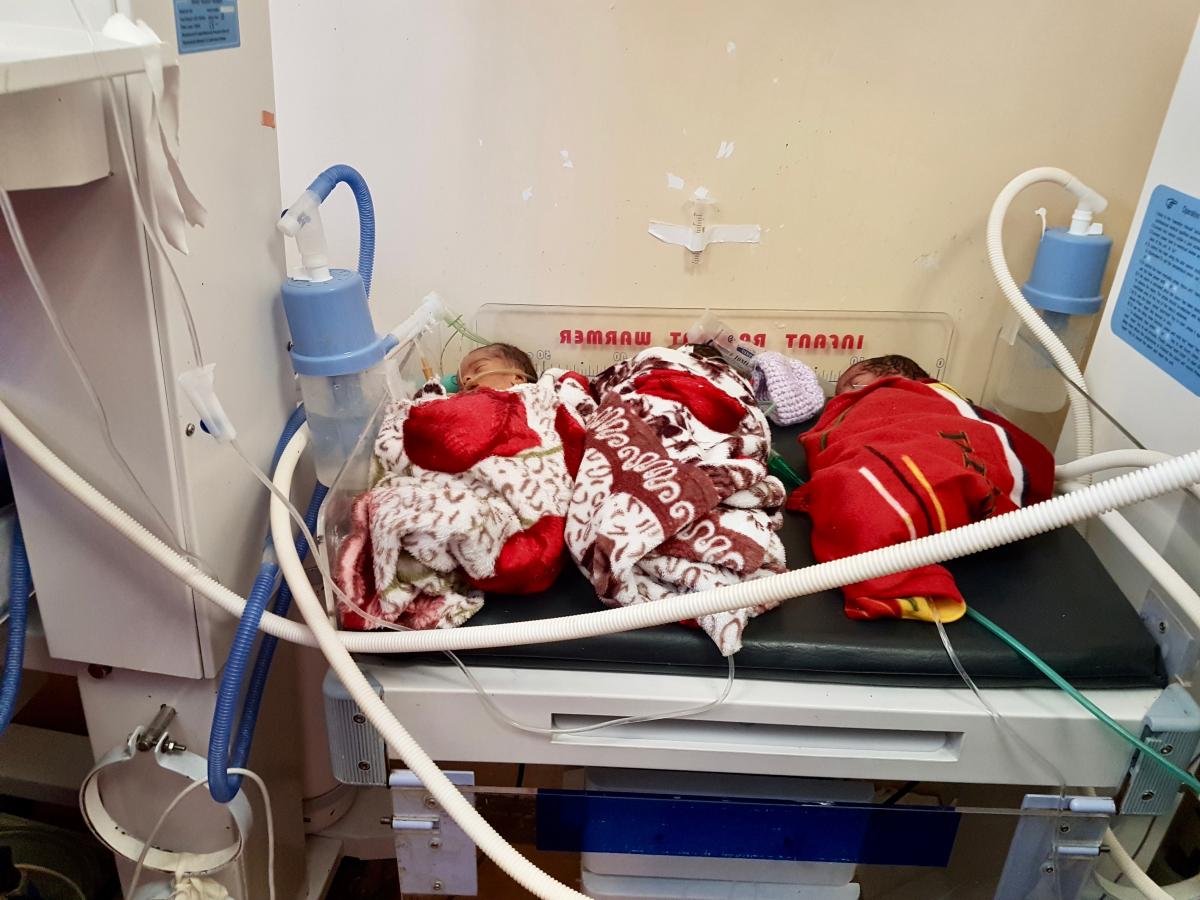Without WASH, Health Workers Can’t Do Their Jobs
The hospital—a referral hospital in Bahir Day, Ethiopia—served a population of 25 million. Dozens of mothers gave birth daily, some of whom were sent from other facilities in order to deliver by emergency Cesarean section. It was a bustling institution, yet it was without some of the most basic amenities—I saw broken water taps, unsanitary toilets, and no soap or other supplies for cleaning. The nurses of the neonatal intensive care unit, where there were no sinks for handwashing, recognized what the conditions meant. Their job is to care for the most vulnerable, yet they were unable to drop the spread of infection within their unit.

The neonatal intensive care unit at the referral hospital in Ethiopia lacked soap and water for health workers to wash their hands. Photo courtesy of Lindsay Denny.
This hospital isn’t the exception in low- and middle-income countries. According to a recent report from WHO and UNICEF, two billion people must rely on health facilities that lack basic water services and 1.5 billion people visit facilities without toilets. Without these basic amenities, it is impossible to provide safe care and live up to the doctrine of “do not harm.”
Nearly 1 in 6 patients in developing countries acquires an infection inside a health facility. Handwashing alone can cut deadly diarrheal disease by 45%, but not if hands cannot be washed due to inadequate soap and water, or if hygiene behaviors are not fully adopted. Some 61% of health workers do not adhere to recommended hand hygiene practices. Hygiene behavior change is needed. As is soap and water.
Learn about WASH in health care facilities during a virtual event on June 24, 2020.
The lack of water, sanitation and hygiene (WASH) services also endangers health workers. Consider the 2014 Ebola outbreak. Ebola not only killed some 11,000 people, it was 103-fold higher in health workers in Sierra Leone than in the general population, 42-fold higher in Guinea health workers, and Liberia lost 8% of its health workforce. These losses were in part due to that fact that health workers did not have access to adequate WASH. The situation has not improved. In the Democratic Republic of the Congo, where Ebola killed thousands, 50% of facilities have no water, 59% have no toilets, and just 62% have soap and water or hand sanitizer at points of care. Now global health care staff addressing COVID-19 face similar challenges and threats. Additionally, given that the majority of midwives, nurses, and cleaners are women, the lack of WASH disproportionately affects women. For example, without proper toilets, female health workers may be forced to hold their bladders through their shifts—a recipe for a urinary tract infection.
This problem of WASH in the health facility has long been neglected, but it is solvable and momentum is building. UN Secretary-General António Guterres issued a global Call to Action in 2018 to get WASH into health facilities; WHO Member States then unanimously adopted in a 2019 World Health Assembly Resolution that includes eight practical steps towards successful implementation by 2030. WHO and UNICEF responded with metrics to chart progress by governments, and dozens of national governments are now exploring concrete plans and resource requirements. In 2020, WHO prioritized the absence of WASH in HCFs as among the most urgent global health challenges in the coming decade for the first time.
Last June, 92 diverse organizations announced commitments to WASH in health facilities. In the past year, these organizations have been translating commitments into action. At the same time, the COVID-19 pandemic has brought the global need into even sharper focus. Now more than ever, WASH in health facilities must be a foremost priority for governments, funders, and development assistance organizations alike. Progress demands an adequate level of support for sustainable, and accountable, WASH services in health facilities, regularly monitored by professional authorities.
On June 24, 2020, Global Water 2020 and Global Health Council are hosting a virtual event recognizing the first anniversary of these commitments. Global health and WASH leaders will come together to reflect on efforts to reach every health facility with WASH services. We urge our global health colleagues, in particular those working on the front lines of health care delivery, to join the discussion. It is critical that we continue to drive progress towards WASH in all health facilities, everywhere. And in the process, we must elevate the voices of frontline health workers, for whom this deficit has the greatest impact.
